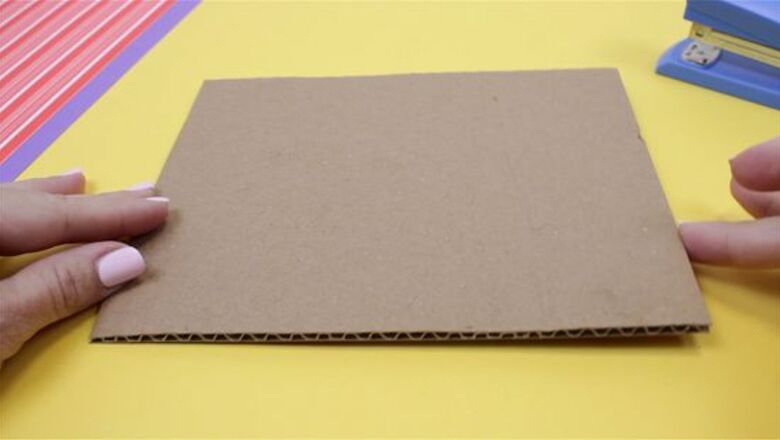
views
Using an Ordinary Stapler and Cardboard
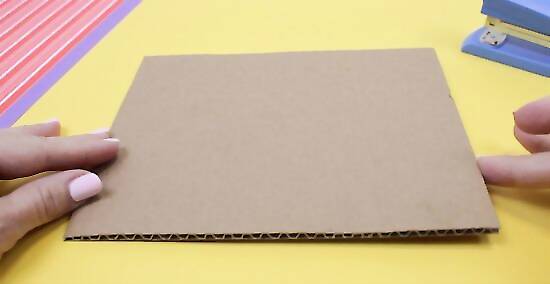
Put down a layer of corrugated cardboard or other protective material. This method involves stapling your booklet against a soft material, then manually pushing the staples down against the booklet. You may use corrugated cardboard, foam, or any other material soft enough for the staples to dig into without attaching. Only use material you don't mind damaging. If you have a large number of booklets to staple, you'll probably prefer the Specialized Stapler method. If you don't have any suitable material and your booklet is thin, try the Two Books method.

Place your booklet face down over the cardboard. Make sure all the pages are in order and aligned with each other. The outside cover should be visible, not the inner pages, or you will have more trouble folding the booklet after stapling.
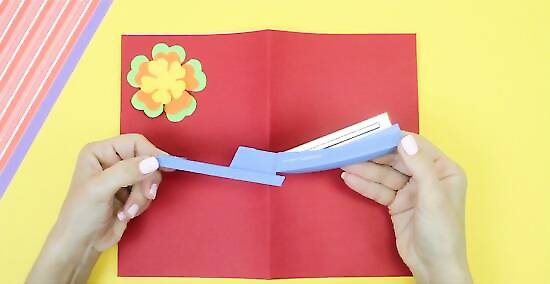
Pull the two arms of the stapler apart. Grasp the upper arm near the joint, not next to the staple-deploying head. Use your other hand to hold down the base, and pull up on the arm. The two sections of the stapler should swing apart.
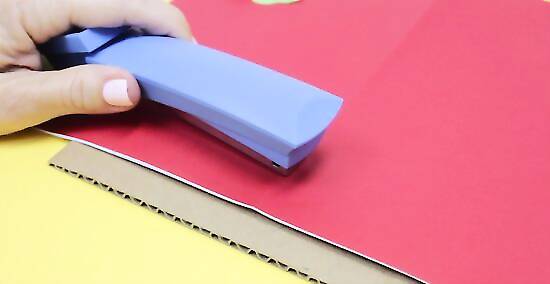
Align the stapler head over the booklet's center. The center of the booklet should receive 2–4 evenly spaced staples to form the spine, depending on how large the booklet is and how sturdy you would like it to be. Each staple should run in the same direction as the spine (vertical when the finished booklet is held for reading), so you can fold the sheets of paper in half around the staples without tearing them. Align your stapler head according to these guidelines.
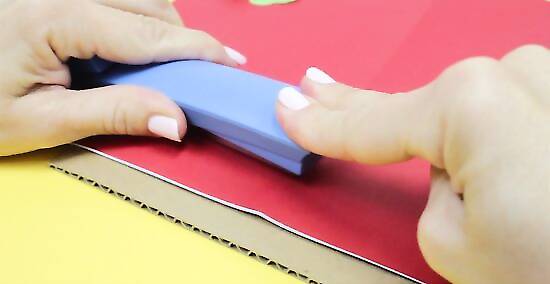
Push down on the stapler head to deploy the staple. Because you are stapling the paper against corrugated cardboard or other soft material, you may not hear the distinctive stapler sound you're used to. Push down firmly, then release and pick up the stapler.

Lift the booklet carefully and inspect the staple. Most likely, the staple is partially attached to the cardboard beneath. Lifting the booklet slowly and gently should pull the two prongs of the staple out of the cardboard, but you may need to bend the staple straight with your finger before pulling. If the staple is firmly attached to the material, the material is too thin to use for this purpose. Detach the staple with a staple remover, then try again with thicker, corrugated cardboard.

Push the staple prongs down over the paper. After detaching the staple from the material beneath, you should see the two prongs poking through the paper, but not folded down. Fold these down toward each other along the spine's length. You may use your fingers, approaching carefully from the side to avoid the sharp point, or lay the paper flat and gently hammer them down with any hard object.
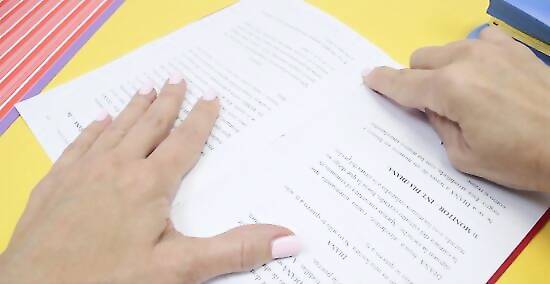
Repeat with remaining staples. Place the booklet over the cardboard again and align the stapler head over the next portion of the spine to be stapled. Try to line up the staples as evenly as possible.
Using an Ordinary Stapler and Two Books

Use this method to staple thin booklets. This method requires no specialized materials, but it is only suitable for thin booklets made from a few sheets of paper. Your stapler needs to be powerful enough to deploy a staple through the booklet when there is no supporting surface behind it, so do not use a stapler that is rusty or jams easily. If you have a large number of booklets to staple, you may wish to save effort by using the Specialized Stapler method.

Place two large books next to each other. Select two books that are exactly the same height when laid flat on a table. Place them flat on a table or other hard surface, leaving a tiny gap between them. The gap only needs to be wide enough to staple the booklet over it without attaching the staple to the book; 1/2 to 1 inch (1.25–2.5cm) should be plenty.

Lay your stack of paper face down over the books, with the center over the gap. Make sure all your pages are in order and aligned, then lay the stack of paper over the two books. The center of the outside cover should be directly over the gap.

Pull the two arms of the stapler apart. Pull the arms of the stapler apart. If only the cover comes off (revealing the staples), put it back and on and try again while holding the sides of the upper arm more firmly.
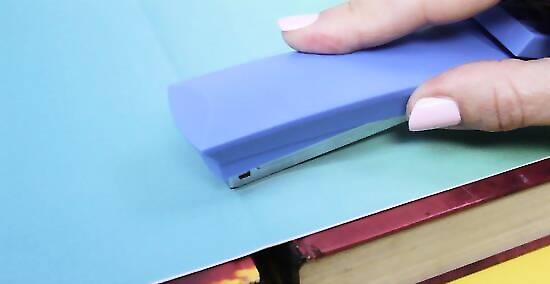
Hold the paper in place and align the top arm over the spine. Hold the booklet in place with your hands or by placing a heavy object on top of each side. Align the stapler arm so the head of the stapler is oriented in the middle of the booklet, where you'd like the first staple to be. Depending on how large the booklet is, you will probably want somewhere between 2 and 4 staples, spaced evenly down the spine.

Push down on the stapler head swiftly. Because there is nothing but air underneath the spine, you will have to push down quickly to get the staple to deploy. Hold the paper in place as you do this to make sure it is not dragged down with the stapler. Do not push so hard that the paper tears; the motion should be firm but over quickly.

Bend down the staple prongs. Pick up the stack of paper and see if the staple went through the paper. If it did, all you need to do is bend the two prongs of the staple flat against the paper, pointed toward each other. You may do this with your fingers, avoiding the sharp point, or by gently hammering them down with any hard object. If the staple did not pierce through the whole stack of paper, your stapler may not be strong enough for this method, or you may not have pushed hard enough. Try again after pushing the two books closer together, and make sure the paper is held down firmly when you apply the staple.

Repeat with remaining staples. Continue until the spine has enough staples to hold the paper in place firmly when folded to form a booklet. 3 is enough for most projects, while a particularly thick or tall booklet may require 4 or more staples.
Using a Specialized Stapler
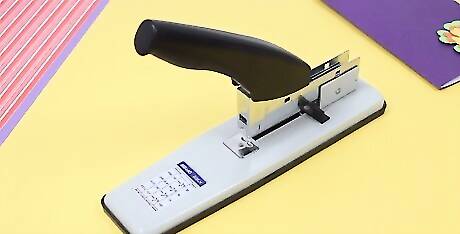
Purchase a centerline or rotating-head stapler. If you staple booklets together frequently, it may be worth investing in one of these two specialized stapler varieties. Centerline staplers are simply oversized staplers which can reach the booklet spine from the correct direction to orient a staple. Rotating-head staplers are shorter, but have a stapler arm that can rotate to apply the staple with the correct orientation. Either variety is suitable for booklets. Centerline staplers are sometimes referred to as booklet staplers or long reach staplers. For centerline staplers, check that the "throat depth" can reach across the full width of your booklet's page. Check the maximum number of sheets the device can staple. Keep in mind this is the number of pieces of paper, not the number of numbered pages in your finished booklet.
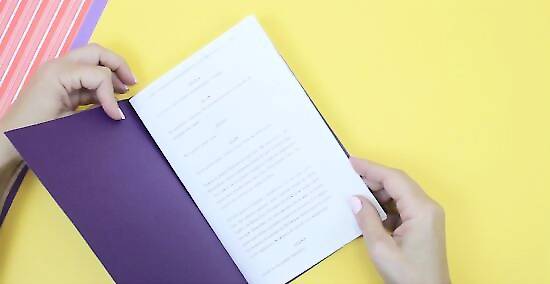
Assemble your booklet. Make sure that all the pages are in order and that the paper is evenly aligned before inserting into the stapler.
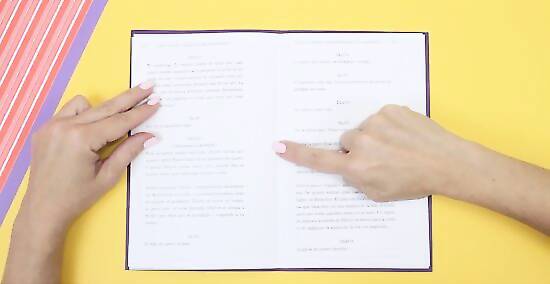
Decide how many staples are required down the spine of the booklet. Usually two will suffice (this is standard) but depending on the size of your booklet, one staple may suffice or you may need three or four. If you need more than one or two staples, it can be helpful to make small pencil marks in advance that show you where to position the stapler. With practice, this will likely become easier.
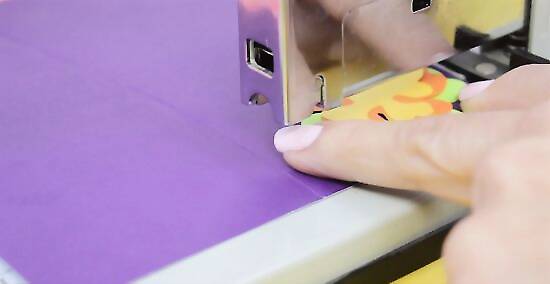
Position your booklet with the outside cover facing upwards. Place it into the specialized stapler so that the center portion is aligned underneath the stapling mechanism. Make sure the booklet is aligned with the stapler, and that the margins on either side of the stapler are as close to the same width as possible.
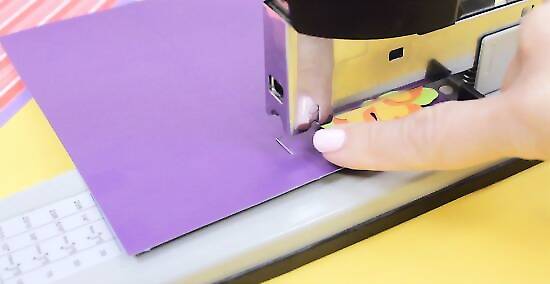
Push the stapler arm down on the spine where you want to place each staple. Once the stapler arm is aligned, push down on the end of the upper arm until you hear the staple go through the paper. Repeat the process above to align your stapler on a different place on the spine, and staple until the booklet has as many staples as you choose. Two or three staples are generally enough.
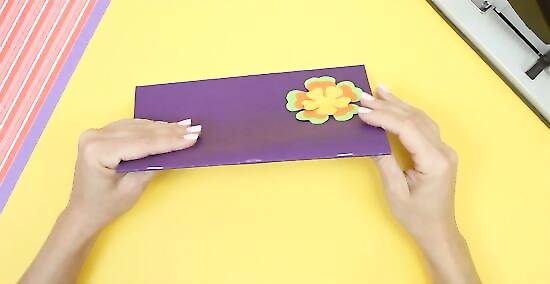
Check that all staples have been properly inserted and sit flat. If any of them failed to puncture the paper, or did not close properly, remove them so you can try again. Do this by carefully unbending each arm of the staple until it is straight, then pushing it out through the hole made by the stapler.
















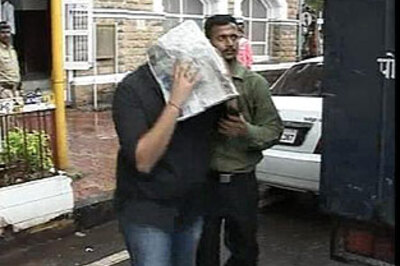


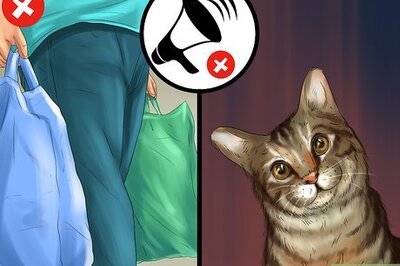
Comments
0 comment